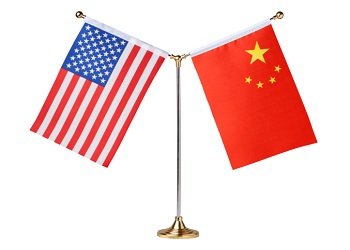The agreement between the United States and China to reduce carbon emissions has immense potential to move the needle on climate change.
As part of the agreement, Mr. Obama announced that the United States would emit 26 percent to 28 percent less carbon in 2025 than it did in 2005. That is double the pace of reduction it targeted for the period from 2005 to 2020.
China’s pledge to reach peak carbon emissions by 2030, if not sooner, is even more remarkable. To reach that goal, Mr. Xi pledged that so-called clean energy sources, like solar power and windmills, would account for 20 percent of China’s total energy production by 2030.
Administration officials acknowledged that Mr. Obama could face opposition to his plans from a Republican-controlled Congress. While the agreement with China needs no congressional ratification, lawmakers could try to roll back Mr. Obama’s initiatives, undermining the United States’ ability to meet the new reduction targets.
This last part is key–and I suspect why we’ll see more and more of these kinds of bi-lateral agreements. One year from now, negotiators will meet in Paris in what will probably be humanity’s last chance to come together around an internationally binding climate change accord. One key stumbling block in these negotiations (and there are many!) is that the United States Senate will almost certainly not ratify any resulting treaty document. The Senate is too polarized, and ratification requires two thirds of senators to approve–an impossibly high hurdle in the current political environment.
The idea of an ambitious, legally binding climate change accord to which all parties accede is aspirational, but sadly not realistic. So what is the Obama administration–which clearly cares about emissions reductions–to do? For months, they have been floating this concept of a “politically binding” agreement. This is a nebulous concept with no grounding in international law, but the general idea is that countries make promises to which they are somehow politically compelled — as opposed to legally bound. It’s certainly a weaker way to enforce an agreement since politics are constantly shifting, but it’s also the more realistic option at this point.
The USA-China climate pact seems to be a key manifestation of this concept. The two largest emitters on the planet have agreed with each other to make substantial reductions in their carbon output. The pact between Obama and Xi does not require senate approval, but it’s something to which the USA and China can hold each other responsible and demonstrates a clear political commitment to implement measures to reach the goals they have set.
This agreement will absolutely set the tone for the Paris talks next year–if the USA and China can find common ground, then the complex diplomacy around an international agreement stands a much better chance of succeeding. But what form that Paris Agreement will take is still very much in question.
For a deeper dive into the complex diplomacy leading up to the Paris Agreement next year, check out this podcast interview with Elliot Diringer of the Center for Climate and Energy Solutions. It was recorded right before the big UN Climate Summit in September and includes a very relevant conversation about this concept of a “politically” vs “legally” binding agreement.
